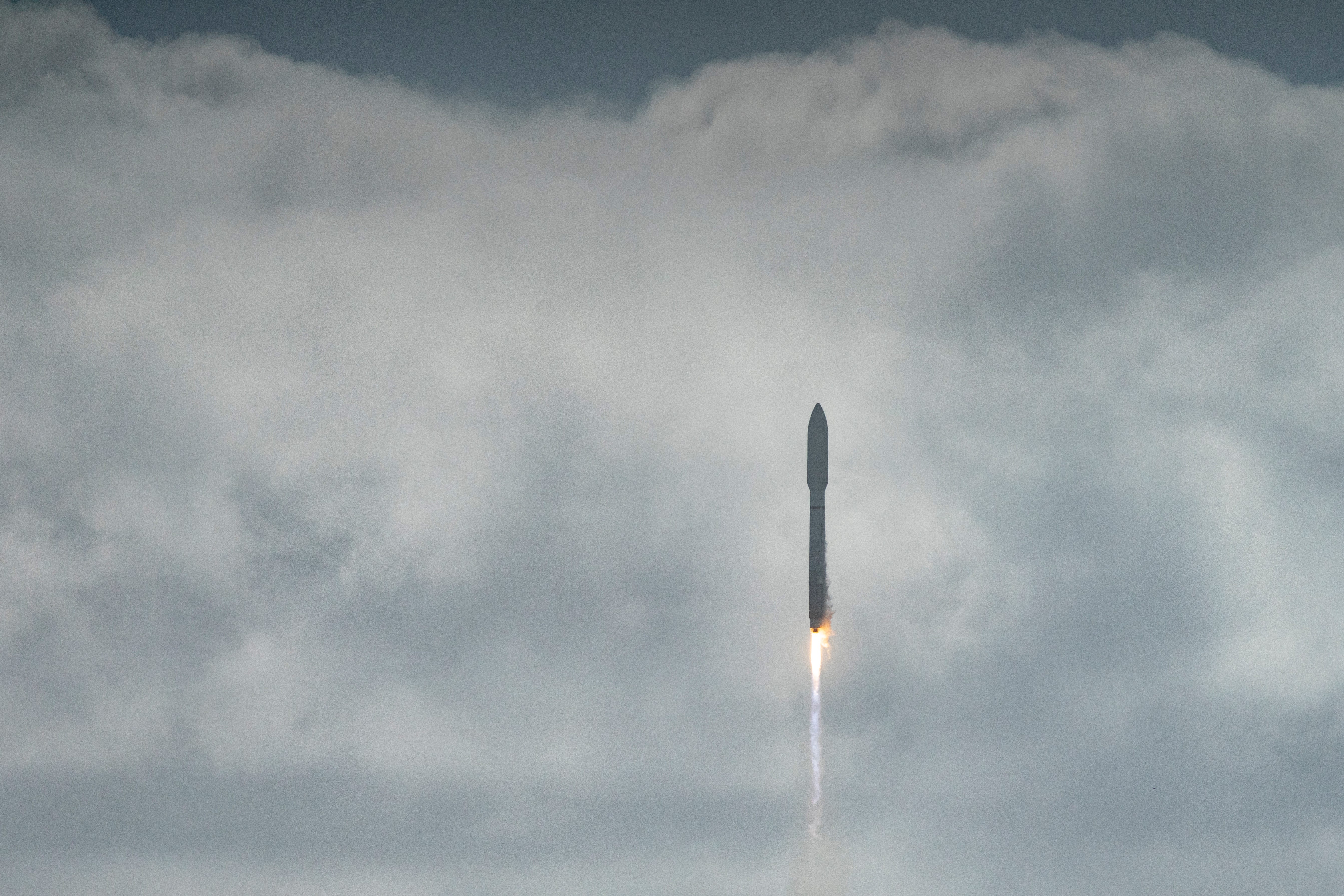
An Atlas V rocket launches the Air Force's X-37B spaceplane from Cape Canaveral
A United Launch Alliance Atlas V rocket boosts an Air Force X-37B spaceplane into orbit from Cape Canaveral on Saturday, May 17, 2020.
United Launch Alliance
SpaceX is now targeting 8:07 PM EDT on Thursday to launch a triple-core Falcon Heavy rocket and lift the Space Force's mysterious unmanned “mini-shuttle” X-37B spaceplane into orbit.
Expect to hear window-shaking sonic booms at select locations along the Space Coast. After a separation phase along a northern trajectory, Falcon Heavy's side boosters will target landings at SpaceX's Landing Zones 1 and 2 at Cape Canaveral Space Force Station.
What's more – although SpaceX has yet to confirm this second mission publicly – another launch window will open on Thursday at 11pm for a Falcon 9 rocket to carry the latest batch of internet-broadcasting Starlink satellites into low Earth orbit.
Starlink's launch window will extend after midnight until 3:23 a.m. Friday, according to FAA and National Geospatial-Intelligence Agency navigational advisories.
On Wednesday morning, SpaceX crews moved the towering 230-foot-tall Falcon Heavy rocket into position on Pad 39A at Kennedy Space Center. The commercial space giant flies its Starlink missions at Launch Complex 40 at nearby Cape Canaveral Space Force Station.
The Space Force's 45th Weather Squadron pegs the Falcon Heavy's “lift-to-launch” weather odds at 80%. However, the forecast calls for a low to moderate risk of upper-level wind shear as a weak front moves east, bringing intermittent rain Thursday morning in Central Florida.
“Most of the upper-level moisture associated with the wave will move off the coast by midday, leaving only low-level rain showers along the front to the west adjacent to the launch window. Therefore, the primary concern about launch weather is the cumulonimbus cloud base associated with any showers that may occur,” the squadron forecast said. Develop forward and along the forehead.
If there is a delay, SpaceX will target the Falcon Heavy's backup launch opportunity at 8:06 p.m. on Friday.
The Boeing-built X-37B will begin its seventh secret mission into orbit. This mission, named USSF-52, will use the Falcon Heavy rocket for the first time. The autonomous spaceplane was last launched in May 2020 aboard a United Launch Alliance Atlas V rocket from Cape Canaveral Air Force Station.
The secret spacecraft logged a record 908 days in orbit before landing in November 2022 at KSC's Launch and Landing Facility.
“Our national security space launches take our most important capabilities into orbit,” Brig. Gen. Christine Banzenhagen, who commands Space Launch Delta 45, said about the X-37B mission in a press release in November.
“We partner closely with our launch service providers, and the entire team is focused on executing a successful mission,” Banzenhagen said.
The 45th Weather Squadron has not issued a detailed forecast for the Falcon 9 mission. The National Weather Service expects it to be mostly cloudy and cool Thursday night at Cape Canaveral Space Force Station, with a low around 52 degrees and a west-southwesterly wind of 5 to 10 mph.
Launches are scheduled for Thursday, two days after a badly damaged Falcon 9 first stage booster returned to Port Canaveral after capsizing on top of its unmanned ship in high winds and waves.
For the latest launch schedule updates from Cape Canaveral Space Force Station and NASA's Kennedy Space Center, visit the website floridatoday.com/launchschedule.
Rick Neil He is Florida Today's space correspondent (for more of his stories, click here.) Call Neale at 321-242-3638 or [email protected]. Twitter/X: @Rick Neal1

“Beer aficionado. Gamer. Alcohol fanatic. Evil food trailblazer. Avid bacon maven.”
